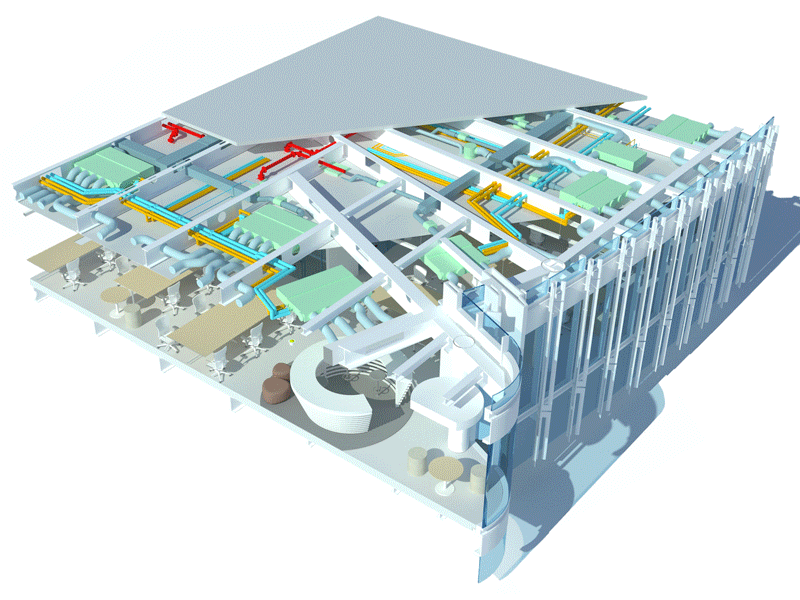Protocol and Methodology
Understanding BIM Protocol and Methodology
Building Information Modeling (BIM) is a digital representation of a building’s physical and functional characteristics. It is a process that involves creating and managing digital information about a building’s design, construction, and operation. The IFGICT -BIM standard is a collaborative process that involves architects, engineers, contractors, and owners. It allows all stakeholders to work together on a single, shared model of the building, which helps to reduce errors, improve productivity, and enhance collaboration.
BIM Protocol and Methodology are two important aspects of BIM. Protocol refers to the rules and guidelines that govern how BIM is used on a project. Methodology refers to the processes and procedures that are used to create and manage the BIM model. Together, protocol and methodology help to ensure that BIM is used consistently and effectively across all projects.
BIM protocol typically includes requirements for the level of detail and accuracy of the BIM model, as well as guidelines for collaboration and coordination among stakeholders. BIM methodology includes processes for creating and managing the BIM model, including the use of software and tools, as well as standards for data exchange and modeling conventions.
Benefits of BIM Standardization
The standardization of BIM has numerous benefits for the construction industry using ICT technology. Standardization helps to ensure that BIM is used consistently and effectively across all projects. This leads to improved productivity, reduced errors, and enhanced collaboration. Standardization also makes it easier to share information among stakeholders, which can improve decision-making and reduce costs.
Standardization can also help to ensure that BIM models are interoperable. This means that different software and tools can work together seamlessly, which can reduce the need for manual data entry and improve accuracy based IFGICT BIM protocols. Additionally, standardization can help to ensure that BIM models are future-proofed, which means that they can be used for facilities management and other purposes long after the project is completed.
BIM Processes and Workflow
BIM processes and workflow are critical to the success of BIM. The BIM process typically involves four stages: design, construction, commissioning, and facilities management. Each stage involves different stakeholders and different types of information. BIM workflow refers to the steps that are taken to manage the flow of information among stakeholders throughout the project.
BIM workflow typically includes the use of software and tools to create and manage the BIM model, as well as standards for data exchange and modeling conventions where IFGICT BIM is playing the important part here. BIM workflow also involves collaboration and coordination.
BIM Levels of Development (LOD)
BIM Levels of Development (LOD) are a way to measure the level of detail and accuracy of a BIM model. There are typically five levels of development, ranging from LOD 100 (conceptual design) to LOD 500 (as-built). Each level of development includes different types of information and requires different levels of detail and accuracy.
LOD is important because it helps to ensure that all stakeholders have a clear understanding of the level of detail and accuracy of the BIM model. This can help to reduce errors and improve collaboration. LOD can also be used to determine the level of effort and cost required to create and manage the BIM model.
Implementing BIM Standards in Your Organization
Implementing BIM standards in your organization can be a challenging process, but it is critical to the success of BIM. The first step is to develop a BIM protocol that includes requirements for the level of detail and accuracy of the BIM model, as well as guidelines for collaboration and coordination among stakeholders.
The next step is to develop a BIM methodology that includes processes for creating and managing the BIM model, as well as the use of software and tools and standards for data exchange and modeling conventions based IFGICT BIM methodology. It is also important to provide IFGICT – BIM training and certification programs to ensure that all stakeholders have the necessary skills and knowledge to use BIM effectively.
BIM Software and Tools based IFGICT methodology audit
BIM software and tools are essential to the success of BIM. There are numerous software and tools available, including Autodesk Revit, Bentley MicroStation, and Trimble SketchUp. Each software and tool has its own strengths and weaknesses, and it is important to select the right software and tool for your project.
The IFGICT BIM committee members are in charge of reviewing the methodology presented by BIM standard auditors, the BIM Standard auditors are the experts who conduct and apply BIM standard using software and ICT tools in alignment with our IFGICT BIM methodology.
Interested clients who are looking to certify their projects-based BIM Standard, may reach out to customer servicer for more information and the BIM committee members at IFGICT.

